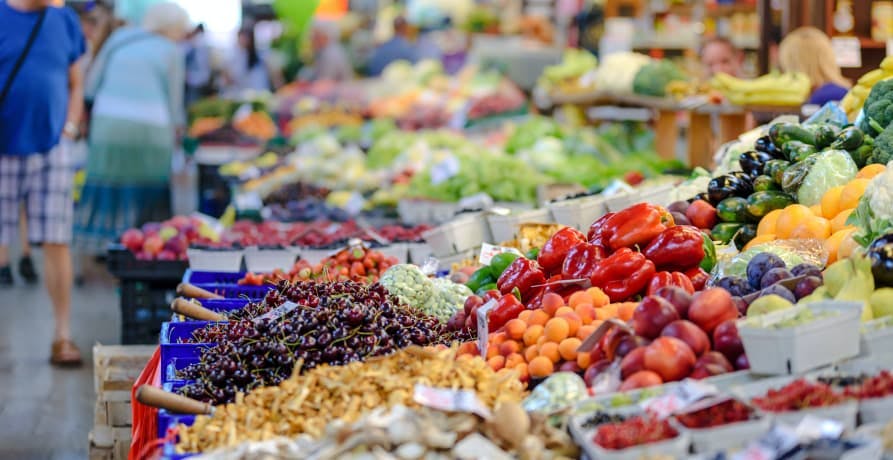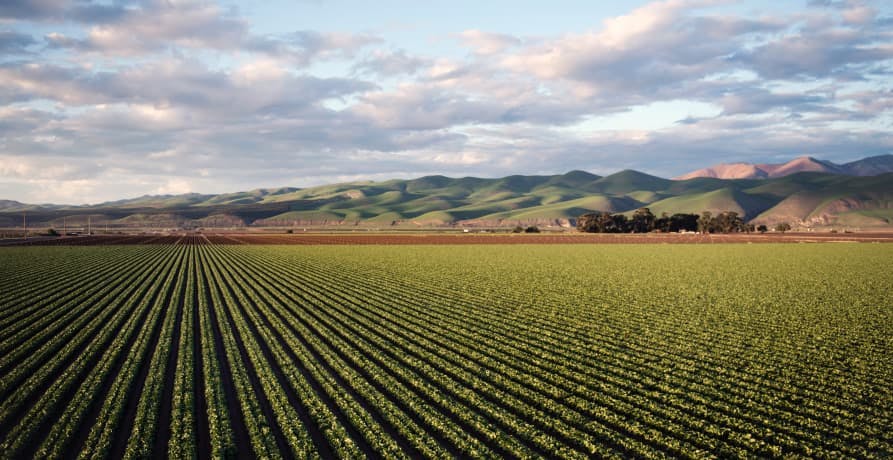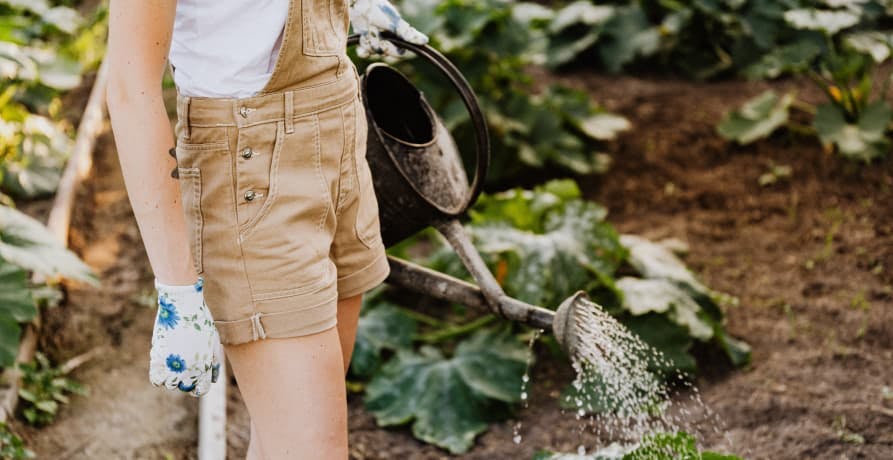ESG / CSR
Industries
Future of Food: What are the Issues and How can we Solve Them?



The future of food is a topic of growing concern as global populations continue to increase, natural resources are diminished, and the effects of climate change are increasingly felt. These issues are placing increasing pressure on global supply chains, and unfortunately, after a steady decline over the last decade, global hunger is now on the rise again, affecting as much as 10% of the world’s population. In order to deal with this issue, the food landscape is going to have to change in order to ensure that everyone has access to sustainable and nutritious food.
👉 In this article we’ll explore the future of food, the issues that are affecting global food supply chains, and what can be done to ensure a sustainable and resilient food system.
The future of food - challenges and solutions
Creating a sustainable and robust food system is becoming an urgent priority. However, there are a number of significant challenges that must be addressed if we’re going to be able to effectively secure the future of food for all.
From climate change, to water scarcity, to changing patterns of food consumption, overcoming these challenges requires innovative approaches and collaborative action. It is only by embracing technology, promoting efficient resource management, and fostering a shift towards more sustainable food choices that we can build a resilient and equitable future of food.
Let’s take a closer look at the challenges and solutions in more detail.

Climate change
Climate change is one of the biggest challenges that we face as a species, not least because of the pressures it’s placing on our food supply and agricultural sector. Rising levels of greenhouse gases are increasing global temperatures, creating unpredictable weather patterns, and resulting in more frequent extreme weather events such as drought, floods and heatwaves.
These impacts are severely affecting crop yields and food production, which is putting significant strain on global supply chains. And given the fact that we’ve not yet managed to curb global emissions, the Earth’s climate is only expected to deteriorate further, making climate change one of the most pressing issues affecting the future of food.
What can be done about it?
The agricultural sector is investing a lot of time and money into the research and development of sustainable and climate-smart agricultural techniques. Methods such as precision farming (a method of improving crop yields through technology sensors and analysis tools), agroforestry (land-use practices where crops are integrated with trees and shrubs), water saving techniques, and the use of climate resilient crop varieties are helping to improve crop yields.
Sustainable farming methods are also becoming increasingly popular, not only because of their benefits for the nutrition of crops and health of soil, but also because consumers are becoming more conscious about the farming methods used to grow their food. There is increasing consumer demand for sustainably grown produce.

Water scarcity and resource management
Water is essential for the production of nutritious and plentiful food, however, water scarcity is a growing threat to the future of food production. Drought and heat waves caused by climate change and intensive industrial farming practices are placing untenable pressure on our water supplies. And with global population numbers rising, the need to produce even more food is only going to increase water demand.
What can be done about it?
Agriculture is the primary user of freshwater - around 70% of all freshwater is used for irrigated crops, livestock, fisheries, aquaculture and forestry. This is why irrigation enhancement is so important. More and more agricultural businesses are implementing climate resistant irrigation infrastructure such as precision irrigation and drip irrigation systems, as well as adopting water resource management practices that optimise the use of rainwater.
Other solutions that are also being explored and implemented include the use of drought-resistant crop varieties that improve the resilience of the crops being grown, and the use of alternative water sources such as wastewater reuse and rainwater harvesting.

Food waste
We throw away around one third of all food produced, which is why food loss and waste is an issue that needs to be tackled if we want to minimise the environmental impact of food production and safeguard the future of food supplies.
The production of food has a significant impact on our environment. As we’ve already seen, it requires huge amounts of fresh water, but more than this, the agricultural sector is responsible for around a quarter of global greenhouse gas emissions. And with the need to produce even more food to sustain our growing populations, the area of land that is used for agricultural reasons is also growing - resulting in the destruction of valuable ecosystems such as the Amazon rainforest to make space.
What can be done about it?
Tackling food waste requires a multi-pronged approach. The producers of food products need to play their part by adopting more efficient supply chain management to minimise the loss of product, they also need to optimise storage and transportation infrastructure.
However, consumers also have a responsibility to minimise food waste on their end. This means that consumers need to implement conscious consumption habits, and cut down on over consumption. Governments and organisations can facilitate these habits by adopting food waste reduction campaigns and helping excess food to reach those who are in need.

Population growth
The global population is expected to rise to 9.8 billion by 2050, and ensuring that every human being has adequate food and nutrition is a significant challenge and priority when it comes to the future of food.
In order to meet the food supply demands of growing populations we’re going to have to produce more food, which means a higher environmental toll, and increased emissions from farming.
What can be done about it?
If we’re going to meet the demand of the world’s growing population without damaging the environment in the process, a number of actions are necessary to combat this challenge.
This not only means that the agricultural sector will have to transition to a more sustainable style of farming generally - ie. by transitioning to organic practices, reducing tillage practices, investing in agroforestry, and fostering circular farming systems - but also requires a shift in consumer consumption patterns.
Individuals need to be educated on the impact of their consumption and encouraged to shift towards a more healthy and sustainable diet. One of the most significant things that individuals can do in this regard is to cut out (or reduce) their intake of meat - particularly beef which is resource-intensive and produces as much as 20 times more greenhouse gases emissions per gram than plant proteins.
Some scientists are also looking into the development of alternative protein sources such as cultured meat and insect protein.

The potential of technology
The future of food will be in a large part shaped by technological innovation. There are a wealth of different techniques that are currently being explored. For example vertical farming, hydroponics (the practice of growing plants without soil), and aquaponics (the combination of raising aquatic animals such as fish while also growing plants in water) open up the possibility of growing food in environments where it would otherwise be impossible due to limited space.
Technology and scientific development is also offering solutions to climate change induced pressures on agriculture. For example CRISPR technology is helping to develop climate resistant crops and livestock, as well as the development of more nutritious food.
The future of food supply chains may also be optimised through technological innovation - AI, blockchain, and data analytics help to optimise food production, distribution and safety.
The future of food
The future of food and our food supply chain is something that demands urgent attention if we’re going to effectively address the numerous, significant challenges it faces, and ensure that growing populations don’t go hungry.
Implementing changes to the agricultural industry is also crucial if we’re going to reduce greenhouse gas emissions and ensure that farming is not irreversibly harming the environment.
Thankfully there are solutions available to us, however, implementing them will take a concerted effort and significant investment. Governments, policymakers, scientists, and agricultural businesses must prioritise the implementation of sustainable agriculture practices, efficient resource management, reduction of food loss and waste, and the support of technological innovation to help secure the future of food production.
What about Greenly?
At Greenly we can help you to assess your company’s carbon footprint, and then give you the tools you need to cut down on emissions. Why not request a free demo with one of our experts - no obligation or commitment required.
If you’d like to learn more about a specific industry, Greenly can help by providing an in-depth industry study, created by our climate scientists.


